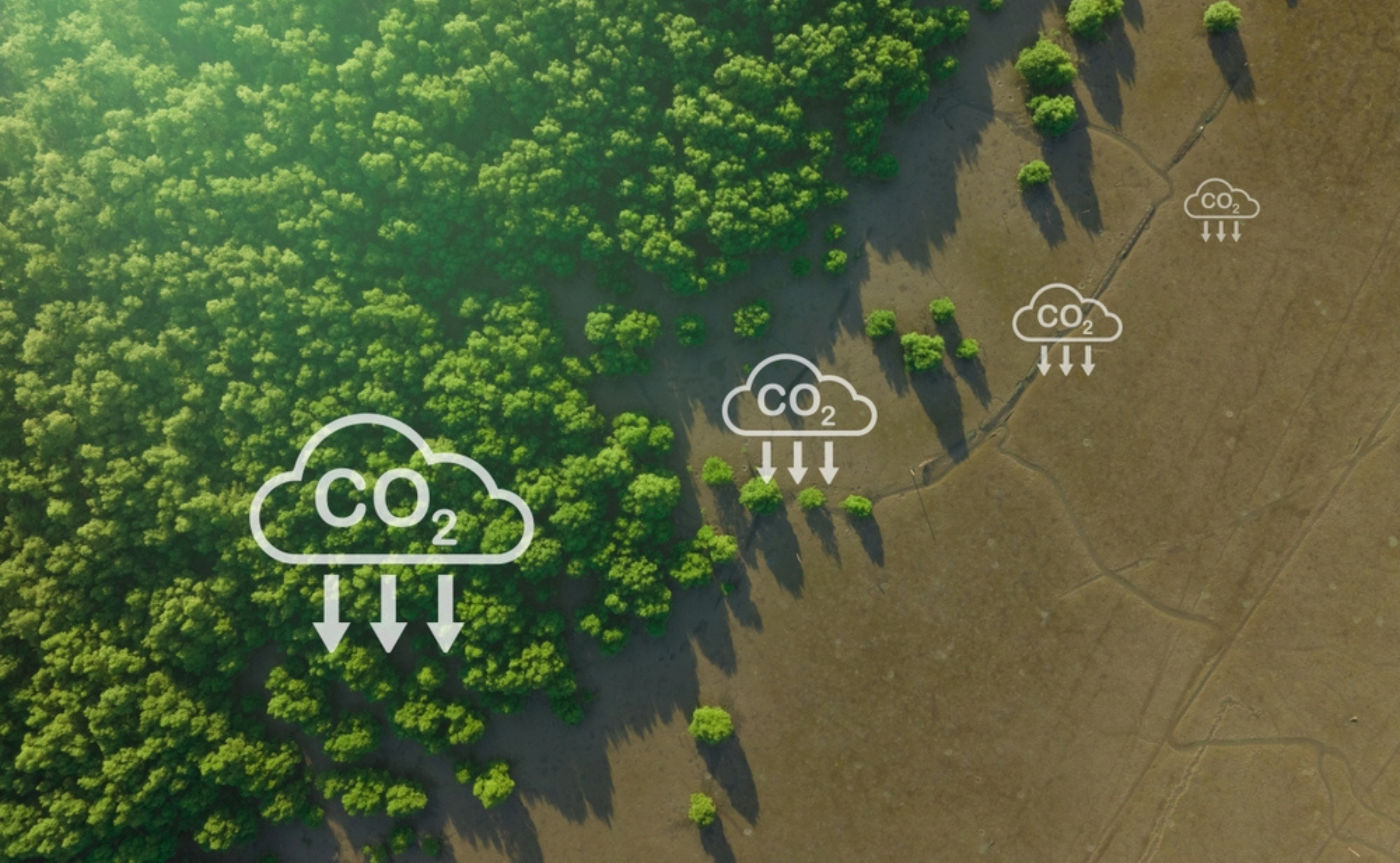
The 29th Conference of the Parties to the United Nations Framework Convention on Climate Change (COP29) will convene in Baku, Azerbaijan, on 11–22 November. As global leaders gather to confront the climate emergency, forests must emerge as a critical resource. Forests are indispensable to our climate goals, serving as major carbon sinks, but they continue to face severe threats from deforestation and degradation. The urgency of protecting forests has never been greater, as scientists warn that the world is edging dangerously close to overshooting the 1.5°C temperature limit set by the Paris Agreement.
Forests: A Natural Solution to Climate Change
Forests play a fundamental role in the global carbon cycle, absorbing approximately one-third of the carbon dioxide (CO2) produced by human activities each year, making them one of our most powerful natural allies in combating climate change. They are not only ecologically critical but also economically advantageous, as forest restoration and maintenance are generally more cost-effective than technological solutions, especially in developing and least developed countries. Tropical forests, such as those in the Amazon and the Congo Basin, are often referred to as the “lungs” of the planet due to their unparalleled capacity to store carbon. Boreal forests in regions such as Canada, the Russian Federation, and Scandinavia also hold vast amounts of carbon, particularly in their soils, making them equally vital for climate regulation.
According to the Intergovernmental Panel on Climate Change, protecting, restoring, and sustainably managing carbon-rich ecosystems like forests and peatlands—along with reducing the greenhouse gas intensity of food production, curbing food waste, and shifting to more sustainable diets—can mitigate 8–14 gigatons of CO2-equivalent annually through 2050 at relatively low costs. Halting the conversion of ecosystems plays an outsized role, as deforestation alone accounts for 45% of emissions from the land-use sector.
Forests’ capacity to sequester carbon is indispensable for keeping the global temperature rise below 1.5°C. In addition to their critical role in carbon capture, forests provide a wide range of ecosystem services, contributing to clean air, water, and biodiversity, all of which are essential for environmental sustainability and human well-being.
The Threats to Our Forests
Despite their immense importance, forests around the world are facing unprecedented challenges. We are losing them at an alarming rate—the equivalent of 27 football pitches every minute. Deforestation, primarily driven by agricultural expansion, infrastructure development, and illegal logging, continues at an alarming rate. The Amazon rainforest alone has lost more than 17% of its forest cover in the past 5 decades, and an additional 17% has degraded. Scientists now warn that the Amazon is nearing a tipping point, beyond which it may transition from a rainforest to a savanna, severely compromising its carbon storage capacity.
Climate change itself exacerbates forest degradation. Rising temperatures, prolonged droughts, and increasing wildfires are contributing to widespread forest loss and reducing the capacity of forests to absorb atmospheric CO2. Additionally, pest outbreaks, such as the bark beetle infestation in North America, are becoming more frequent due to warming temperatures, leading to further tree mortality and carbon release.
Political and economic factors also hinder progress in forest conservation. Weak governance, conflicting land-use policies, and limited financial resources in many countries prevent the effective enforcement of forest protection measures. In some regions, corruption and illegal logging operations further undermine conservation efforts, while in others, the demand for agricultural land leads to relentless deforestation.
Global Solutions, Collaborative Actions
The solutions to these complex challenges are multi-faceted and require global collaboration. At COP26 in 2021, world leaders signed the Glasgow Leaders’ Declaration on Forests and Land Use, committing to halt and reverse deforestation by 2030. This was a historic step, but the real challenge lies in translating these commitments into action.
The Reducing Emissions from Deforestation and Forest Degradation Plus (REDD+) framework has been a promising approach, incentivizing developing countries to protect forests in exchange for financial compensation. However, REDD+ requires more robust funding, improved transparency, and stronger accountability mechanisms to reach its full potential. Scaling up this initiative is crucial if we are to make meaningful progress. Additionally, agroforestry and reforestation initiatives can help restore degraded lands and enhance biodiversity while sequestering more carbon.
Indigenous communities play a pivotal role in forest conservation. Their lands contain nearly a quarter of the carbon stored in the world’s tropical forests, making them essential for global climate stability. These communities have a long history of practicing sustainable land management. Empowering Indigenous peoples by recognizing their land rights and supporting their forest management strategies is not only an ethical responsibility but also a key strategy for enhancing global conservation efforts.
At COP29, countries must not only recommit to halting deforestation but also address the root causes of forest loss. Strengthened financial mechanisms, such as the Green Climate Fund and the Global Environment Facility, are essential to providing developing countries with the resources needed to protect their forests. Developed nations must fulfill their promises of climate finance, including the commitment made at COP26 to double adaptation finance by 2025. This funding is critical, particularly for countries already grappling with the effects of climate change.
Another key area of focus at COP29 will be improving transparency and accountability in climate finance. Developing countries have expressed frustration with the slow pace of financial flows, much of which comes in the form of loans rather than grants, increasing the debt burden on already vulnerable economies. Initiatives like the Glasgow Leaders Declaration Dashboard, launched by the Forests Declaration Assessment and the World Resources Institute’s Systems Change Lab, will play a pivotal role in tracking and reporting progress on forest-related commitments.
A Call to Action
Without an ambitious and coordinated effort to protect and restore the world’s forests, achieving the goal of limiting global temperature rise to 1.5°C will be unattainable. Despite the growth in forest-related commitments and pledges in recent years, forests continue to be undervalued in both policies and markets. The private sector must play a more significant role by eliminating deforestation from global supply chains and increasing investments in nature-based solutions.
As the world prepares for COP29, the stakes could not be higher. The decisions made in Baku will shape the future of forests and, by extension, the future of our climate. Protecting forests is not merely an environmental issue—it is essential for global survival. The time for action is now, and the next decade will be crucial in determining the trajectory of our climate response.
Looking beyond COP29, Brazil—home to the world’s largest tropical forest—will host the G20 in 2024 and COP30 in 2025. These events must be seen as opportunities to place the Amazon and all tropical forests at the center of global climate and nature discussions. Forest protection should remain a top priority for the years to come. With these major events on the horizon, the focus on forests must intensify, presenting both challenges and opportunities for nations to strengthen their commitments to halting deforestation and restoring degraded ecosystems.






